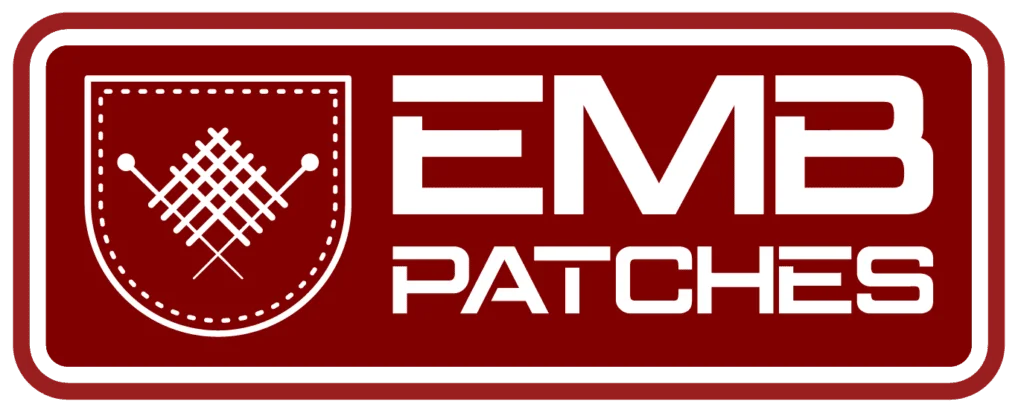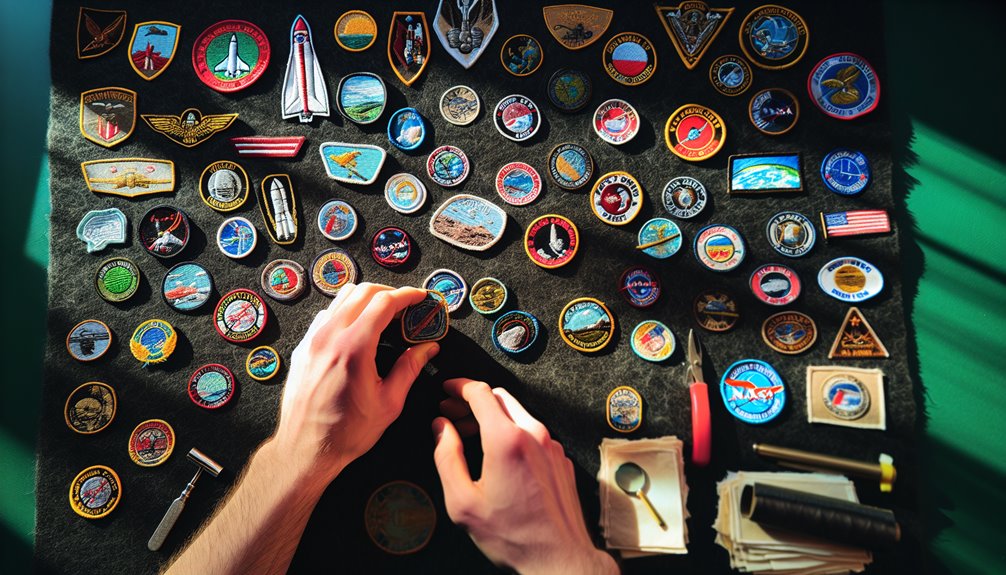Patch collecting originated from military insignia but has evolved into diverse civilian communities centered around military memorabilia, pop culture, and commemorative designs. Enthusiasts connect through specialized forums, trading platforms, and social media groups where authentication knowledge and ethical trading practices are valued. Collectors should focus on preservation using acid-free storage, proper documentation of provenance, and authentication techniques to identify counterfeits. Engaging with established communities offers invaluable guidance for those beginning their journey into this historically rich hobby.
The Origins of Patch Collecting: From Military Heritage to Civilian Passion
While many hobbyists engage with collectibles ranging from stamps to sports cards, embroidered patch collecting stands apart through its distinct military origins.
Military insignia, dating back to the early 20th century, served practical purposes—identifying rank, unit, and achievements. These embroidered symbols fostered camaraderie among service members while establishing visual hierarchies within military organizations.
Categories of Collectible Patches: Understanding the Landscape
As embroidered patch collecting evolved beyond military circles, collectors began organizing their acquisitions into distinct categories—a practice bringing order to an overwhelming array of designs. Patch types range from vintage military insignia to modern artistic expressions, with patch history often determining value and rarity.
| Category | Notable Features | Collecting Difficulty |
|---|---|---|
| Military | Historical significance, branch-specific | Medium-High |
| Pop Culture | TV shows, bands, movies | Low-Medium |
| Commemorative | Events, achievements, milestones | Medium |
Patch communities often specialize in specific categories, gathering at patch events to trade and showcase collections. The evolution of patch manufacturing techniques has influenced patch aesthetics, with patch artists now utilizing advanced embroidery methods. Current patch trends show growing interest in limited editions and artist collaborations.
Building Your First Collection: Essential Tips for Beginners
Beginning a patch collection requires thoughtful planning rather than impulsive purchases. Novice collectors should establish clear collection strategies early, determining whether to focus on themes, historical periods, or specific organizations. This foundational decision shapes future acquisitions and prevents scattered, unfocused collections.
Effective patch sourcing involves investigating multiple channels. Military surplus stores, antique shops, and verified online marketplaces offer authentic pieces, while collector forums provide valuable connections. Beginners should exercise caution with online purchases, as counterfeits circulate widely. Documentation of provenance becomes increasingly important as collections grow.
New collectors should also establish proper storage systems immediately. Acid-free display books or climate-controlled shadow boxes prevent deterioration from light exposure, humidity, and handling.
These preservation methods protect both the collection’s historical significance and potential investment value.
Preservation and Display Methods for Patch Collectors
The preservation methods mentioned in the beginner’s guide form the foundation for more advanced conservation techniques that serious patch collectors must utilize.
As collections grow, collectors need sophisticated display techniques that showcase and protect their treasured items. Acid-free storage boxes, ultraviolet-resistant display cases, and climate-controlled environments prevent color fading and fabric deterioration, which can destroy irreplaceable patches.
Patch preservation extends beyond proper storage to include handling protocols. Collectors should always wash hands before touching patches and use cotton gloves when possible.
Rotating displayed patches every few months prevents uneven light exposure, while keeping collections away from direct sunlight and high humidity areas guarantees longevity.
These preservation practices not only maintain a collection’s monetary value but also preserve the historical and cultural significance embedded in each carefully crafted embroidered piece.
Notable Online Communities and Forums for Patch Enthusiasts
Online communities have transformed patch collecting from a solitary pursuit into a vibrant social hobby, with Reddit serving as a central hub through subforums like r/PatchCollecting and r/MoralePatchMarket.
These digital spaces enable collectors to showcase rare acquisitions, exchange knowledge about authentication, and arrange trades across international boundaries without leaving home.
Discord servers dedicated to patch enthusiasts have further enhanced real-time communication among collectors. They feature specialized channels for military patches, vintage finds, and contemporary artist releases, with strict moderation to prevent counterfeits from circulating.
Reddit’s Patch Ecosystems
Where do digital-age patch enthusiasts gather to share their collections and expertise? Reddit has become a central hub for patch collectors worldwide, offering specialized communities where enthusiasts exchange information, trade items, and showcase rare finds. These subreddits create vibrant ecosystems of knowledge and camaraderie.
| Subreddit | Focus | Subscriber Count |
|---|---|---|
| r/EmbroideredPatches | General patch collecting | 12,500+ |
| r/MilitaryPatches | Military insignia and patches | 9,800+ |
| r/PatchTrading | Exchange and trading | 7,200+ |
| r/CustomPatches | Design and creation | 5,600+ |
| r/VintagePatches | Historical and rare specimens | 4,300+ |
These Reddit communities maintain strict rules regarding sales and authentication to protect members from counterfeits. Newcomers should familiarize themselves with each community’s guidelines before posting to guarantee positive interactions within these specialized collector spaces.
Discord Patch Exchanges
Beyond Reddit’s structured forums, Discord servers have emerged as dynamic, real-time communities for patch enthusiasts seeking immediate interaction and connection with fellow collectors. These platforms facilitate immediate patch trading opportunities through dedicated channels where members can post, negotiate, and arrange exchanges with collectors worldwide.
- Virtual meetups occur regularly on popular patch Discord servers, allowing collectors to showcase recent acquisitions through video calls and screen sharing.
- Community engagement extends beyond transactions, with members sharing patch preservation techniques, authentication methods, and warnings about counterfeit patches.
- Discord exchanges often involve trust-based systems where established members receive verification badges after completing successful trades.
These communities typically implement strict moderation policies to guarantee fair trading practices and protect members from potential scams in the growing digital patch marketplace.
Authentication Techniques: Spotting Reproductions and Counterfeits
In the often complex world of patch authentication, collectors must distinguish between genuine artifacts and sophisticated counterfeits through both physical and digital examination.
Authentic patches typically reveal their age through specific thread types, backing materials, and manufacturing techniques that reproduction artists frequently fail to replicate precisely.
Collectors can arm themselves with specialized tools such as UV lights, thread counters, and high-resolution photography to verify legitimacy before making significant investments in rare or historical patches.
Physical vs. Digital Signs
While collecting embroidered patches continues to grow in popularity, enthusiasts must develop the ability to distinguish authentic items from increasingly sophisticated reproductions.
Authentication involves examining both the patch’s physical signage and digital badges or certificates that may accompany legitimate items. Collectors should become familiar with the distinct characteristics of each verification method.
- Physical indicators include thread quality, backing material texture, and border precision that can be examined with a magnifying glass.
- Digital authenticity markers often feature unique QR codes, online verification systems, or blockchain certificates.
- Limited edition patches typically combine physical and digital authentication elements, creating a dual-verification system.
Understanding these differences helps collectors avoid counterfeit patches that may appear convincing at first glance but lack the quality markers of genuine collectibles.
Authentication Tools Revealed
Serious collectors of embroidered patches require specialized tools and techniques to identify counterfeit items with confidence. Among common authentication methods are magnifying loupes and UV lights, which reveal thread inconsistencies and fluorescent materials often used in reproductions.
Digital microscopes have become increasingly important, allowing collectors to capture high-resolution images of stitching patterns and compare them against verified examples.
Establishing patch provenance is equally critical in the authentication process. Collectors should maintain detailed purchase history records, including original receipts, certificates of authenticity, and correspondence with reputable dealers.
Online databases now catalog distinct characteristics of genuine patches from various manufacturers and eras, helping enthusiasts avoid costly mistakes.
Veteran collectors recommend joining specialized forums where members share knowledge about emerging counterfeit techniques and authentication challenges specific to particular patch categories.
Trading Etiquette: Best Practices in the Patch Community
Collectors’ conduct during patch trades often determines their reputation within the collecting community. Establishing proper etiquette on trading platforms guarantees positive experiences for everyone involved. Ethical considerations, including transparency about patch provenance and honest valuation, form the foundation of respectful exchanges.
When negotiating trades, collectors should:
- Communicate clearly about patch condition, documenting any flaws with photographs
- Respond promptly to inquiries and honor commitments once agreements are reached
- Ship items securely with tracking information shared between trading partners
Social media interactions have amplified the importance of maintaining community respect. Collectors who share positive experiences, provide fair assessments during negotiations, and maintain consistency in their trading behavior develop trustworthy reputations that facilitate future acquisitions and lasting relationships.
Specialty Collecting: Focusing on Themes, Eras, or Organizations
Many collectors find greater satisfaction in their hobby by narrowing their focus to specific categories rather than pursuing patches indiscriminately. Theme exploration allows enthusiasts to build collections that reflect personal interests, while understanding era significance provides historical context to each piece. Organization representation often carries deeper cultural influence, connecting collectors to communities with shared values.
| Focus Area | Benefits | Notable Examples |
|---|---|---|
| Military | Historical context | WWII unit patches |
| Sports | Team evolution | Olympic memorabilia |
| Travel | Geographical diversity | National parks |
| Music | Cultural movements | Band tour patches |
| Scouting | Achievement recognition | Merit badges |
This specialization transforms random acquisitions into cohesive stories. Collectors often discover that focused collections enhance patch aesthetics through visual harmony while facilitating personal storytelling. Beyond acquisition, specialty collecting deepens one’s understanding of significant historical periods and community connections.
Digital Tools and Resources for the Modern Patch Collector
While traditional collecting methods remain valuable, today’s enthusiasts benefit greatly from the digital revolution that has transformed patch collecting. Online marketplaces connect buyers and sellers globally, dramatically expanding access to rare and regional patches. Digital photography and cataloging software help collectors document their acquisitions with precision and searchability.
- Social media platforms facilitate communities where collectors share finds, trade items, and discuss patch history.
- Specialized patch apps and data tracking tools allow enthusiasts to manage their collections, track values, and identify authentication markers.
- Virtual exhibitions and patch blogs provide educational resources about historical significance and collecting techniques.
These digital resources require careful evaluation, as misinformation can spread quickly online, potentially affecting market values and authentication standards for serious collectors.
Patch collecting connects enthusiasts across generations through tangible pieces of history and art. As this community grows, collectors must remain vigilant about authenticity while embracing new preservation techniques and digital resources. What better way to preserve cultural heritage than through these embroidered time capsules? Whether building a specialized collection or trading with fellow enthusiasts, the future of patch collecting remains bright for those who appreciate these small but significant textile treasures.

